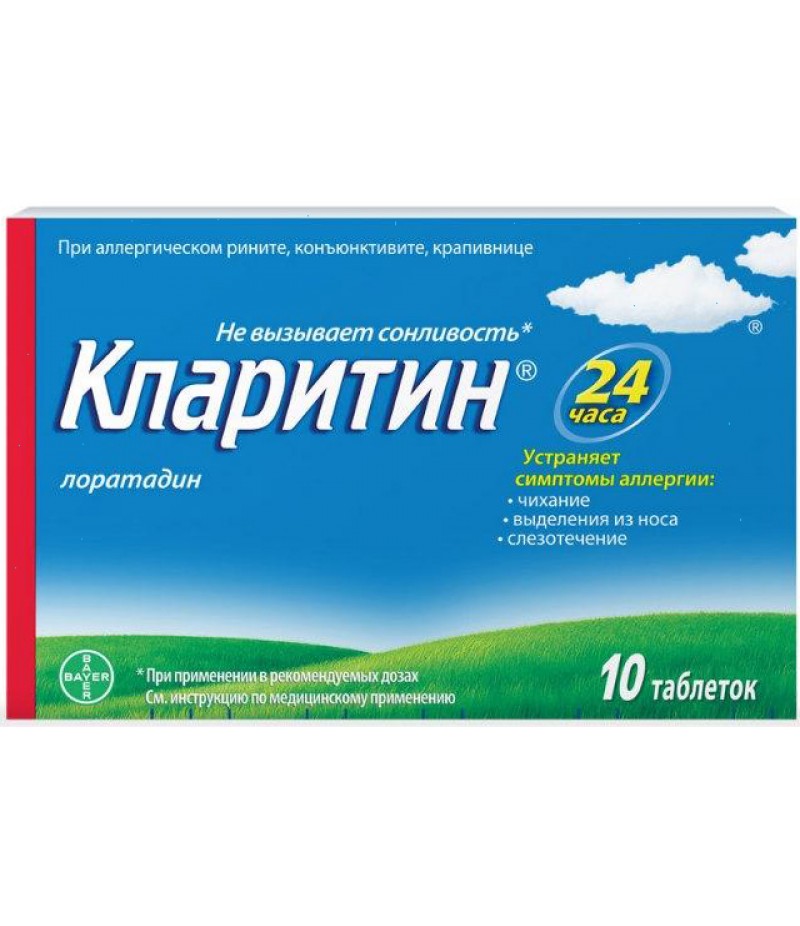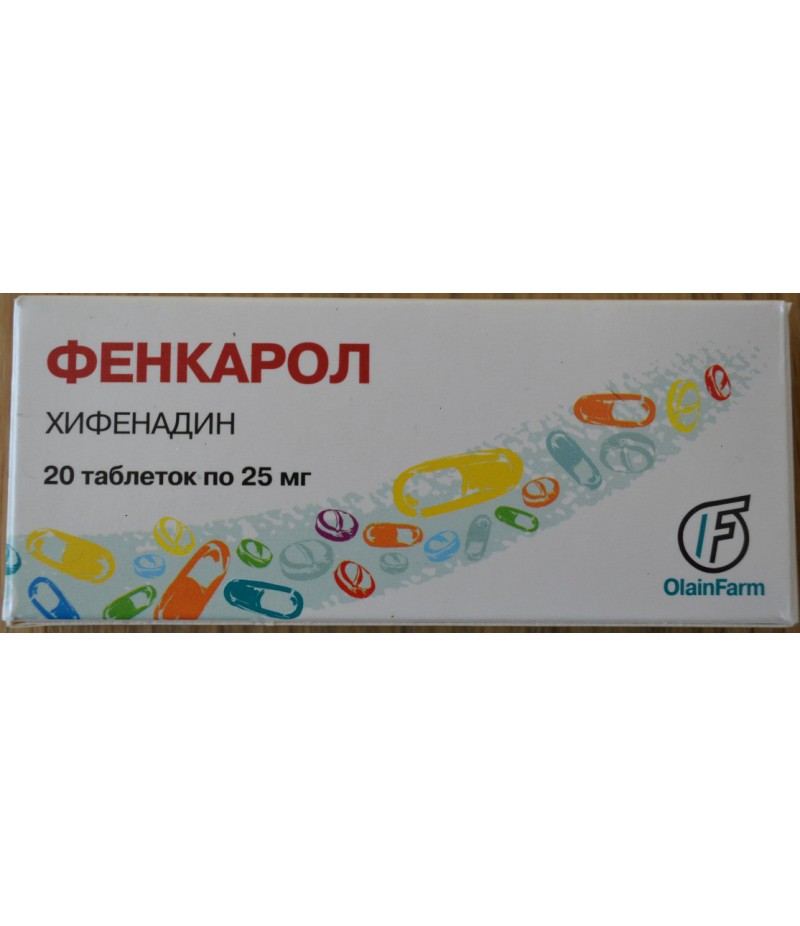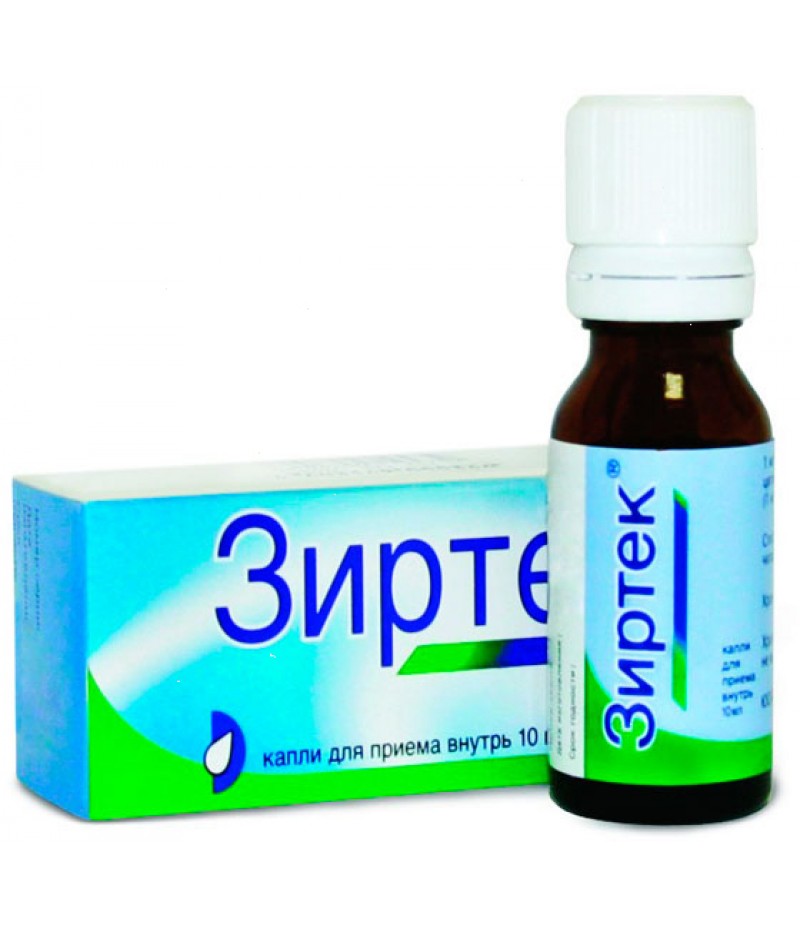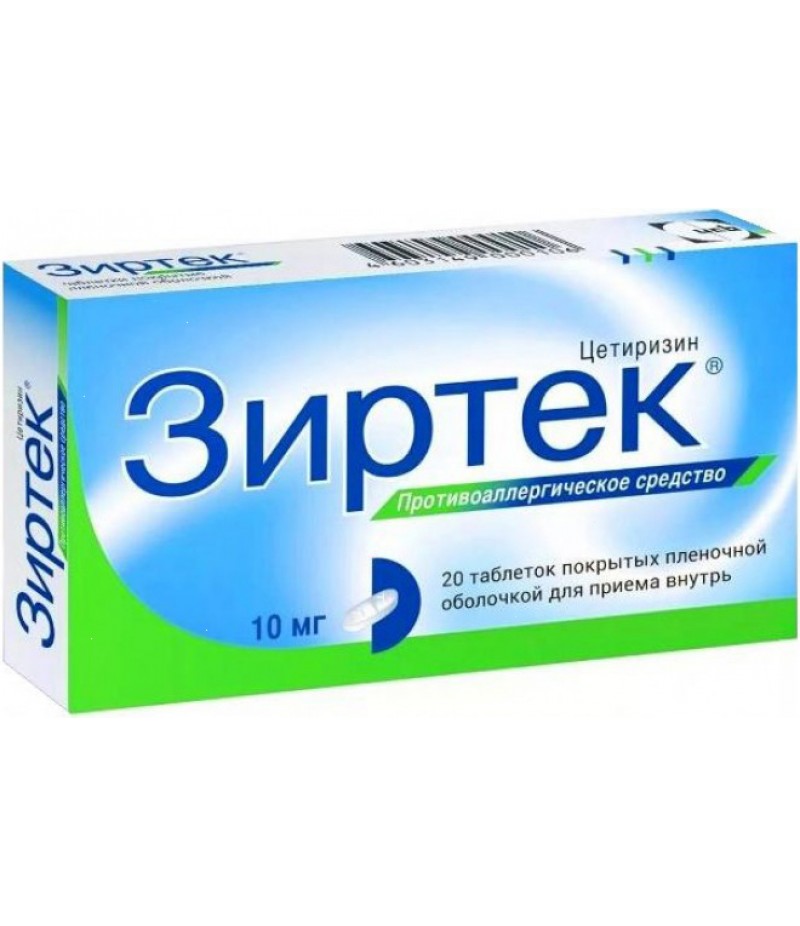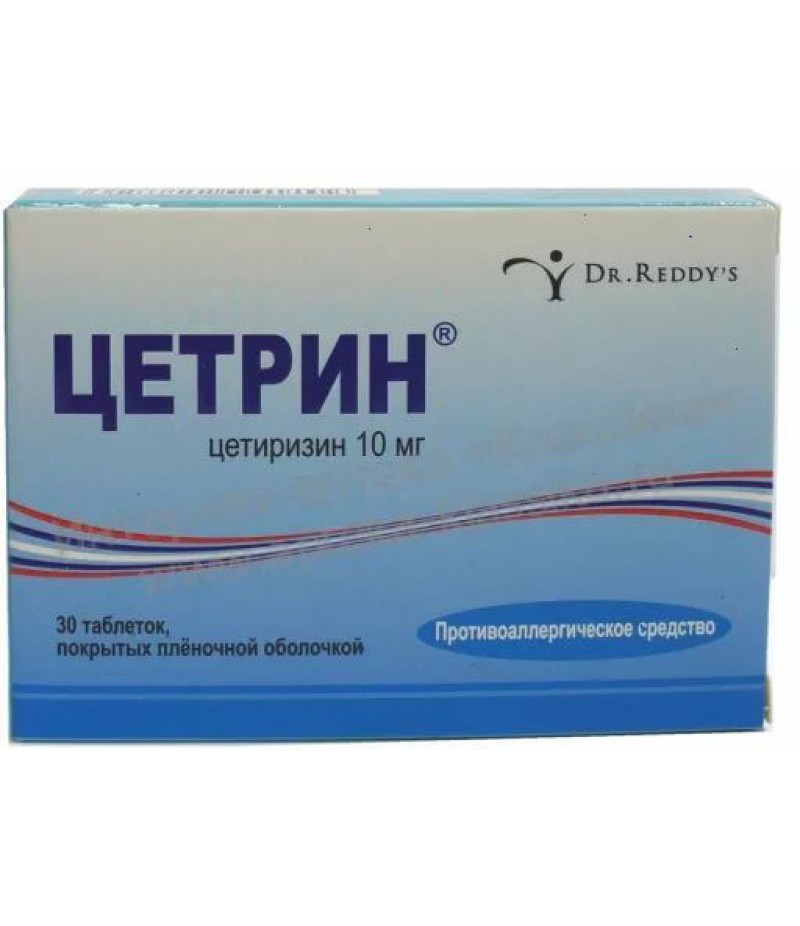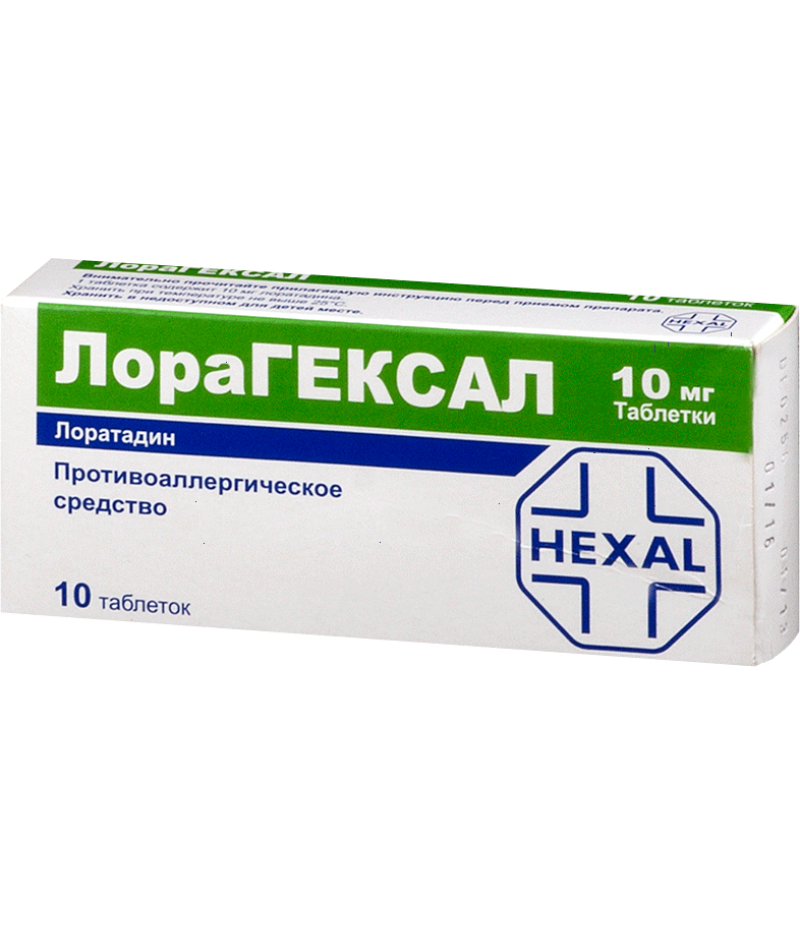Claritine 10mg #10
- $13.67
- Availability:In Stock
Claritine instuction for useYou can buy Claritine hereClinical and pharmacological groupThe blocker of histamine H1 receptors. Anti-allergic drugForm of release, composition and packagingTablets of white or almost white color, not..
Claritine instuction for use
You can buy Claritine here
Clinical and pharmacological group
The blocker of histamine H1 receptors. Anti-allergic drug
Form of release, composition and packaging
Tablets of white or almost white color, not containing extraneous
inclusions, are oval, there is a risk on one side, the "Cup and flask"
trade mark and the figure "10", the other side is smooth.
1 tab.
loratadine 10 mg
Excipients: lactose monohydrate - 71.3 mg, corn starch - 18 mg, magnesium stearate - 0.7 mg.
10 pieces. - Blisters (1, 2, 3) - packs of cardboard.
pharmachologic effect
Antiallergic drug, selective blocker of peripheral histamine H1 receptors. Loratadine is a tricyclic compound with a pronounced antihistamine effect. It has a fast and long-lasting antiallergic effect.
Loratadine does not penetrate the BBB and has no effect on the central nervous system. Does not have a clinically significant anticholinergic or sedative effect, i.e. does not cause drowsiness and does not affect the rate of psychomotor reactions when administered at recommended doses. Taking Claritin does not lead to an extension of the QT interval on the ECG. With prolonged treatment, there were no clinically significant changes
in vital signs, physical examination data, laboratory results, or ECG.
Loratadine does not have significant selectivity for histamine H2 receptors. It does not inhibit norepinephrine reuptake and has virtually no effect on the cardiovascular system or rhythm driver function.
After intake of the drug Claritin, the onset of action - within 30 minutes. The antihistamine effect reaches a maximum after 8-12 hours from the onset of action and lasts for more than 24 hours.
Pharmacokinetics
Suction
After taking the drug inside loratadine quickly and well absorbed from the digestive tract. Tmax
loratadine in blood plasma is 1-1.5 h, and its active metabolite
desloratadine is 1.5-3.7 h. Food intake increases Tmax of loratadine and
desloratadine by approximately 1 h, but does not affect the
effectiveness of the drug. Cmax loratadine and desloratadine is not dependent on food intake.
Bioavailability of loratadine and its active metabolite is dose-dependent.
Distribution
Loratadin binds to a high degree of plasma proteins 97-99%, and its active metabolite - to a moderate degree - 73-76%.
Metabolism
Loratadine is metabolized with the formation of desloratadine with the
participation of the isoenzyme CYP3A4 and, to a lesser extent, CYP2D6.
Excretion
It
is excreted by the kidneys (approximately 40% of the dose taken
internally) and through the intestine (approximately 42% of the ingested
dose) for more than 10 days, mainly as conjugated metabolites. Approximately 27% of the ingested dose is excreted by the kidneys within 24 hours after taking the medication. Less than 1% of the active substance is excreted by the kidneys unchanged within 24 hours after taking the drug.
T1 / 2 loratadine is from 3 to 20 hours (an average of 8.4 hours), and
desloratadine - from 8.8 to 92 hours (an average of 28 hours).
Pharmacokinetics in special clinical cases
The pharmacokinetic profiles of loratadine and its active metabolite in adults and elderly healthy volunteers were comparable.
T1 / 2 loratadine and desloratadine in elderly patients is,
respectively, from 6.7 to 37 hours (an average of 18.2 hours) and from
11 to 39 hours (an average of 17.5 hours).
In
patients with chronic renal disease Cmax and AUC, loratadine and its
active metabolite are increased compared to patients with normal renal
function. T1 / 2 loratadine and its active metabolite does not differ from that in healthy patients. T1 / 2 loratadine and its active metabolite does not change in the presence of chronic renal failure. Conducting hemodialysis in patients with chronic renal failure does
not affect the pharmacokinetics of loratadine and its active metabolite.
In
patients with alcoholic liver damage, Cmax and AUC of loratadine and
its active metabolite are 2-fold higher than those in patients with
normal liver function. T1
/ 2 loratadine and its active metabolite increases with alcoholic liver
damage (depending on the severity of the disease) and does not change
in the presence of chronic renal failure.
Indications
- seasonal (pollinosis) and all-the-year-round allergic rhinitis and
allergic conjunctivitis (to eliminate symptoms associated with these
diseases - sneezing, itching of the nasal mucosa, rhinorrhea, burning
sensation and itching in the eyes, lachrymation);
- chronic idiopathic urticaria;
- skin diseases of allergic origin.
Contraindications
- age up to 3 years (for tablets);
- the period of lactation (breastfeeding);
- rare hereditary diseases (violations of galactose tolerance, lactase
deficiency lapp or malabsorption of glucose-galactose) - due to the
presence of lactose, which is a part of tablets;
- deficiency of sugar / isomaltase, intolerance to fructose,
glucose-galactose malabsorption - due to the presence of sucrose, which
is part of the syrup;
- Hypersensitivity to the components of the drug.
With caution should prescribe the drug to patients with severe impairment of liver function, during pregnancy.
Dosage
The drug is administered orally, regardless of food intake.
Adults (including elderly patients) and adolescents over the age of 12
years are recommended to take Claritin 10 mg (1 tablet or 2 teaspoons /
10 ml / syrup) 1 time / day.
Children
aged 2 to 12 years, the dose of Claritin is recommended to be
administered depending on the body weight: with a body weight of less
than 30 kg - 5 mg (1/2 table or 1 teaspoon / 5 ml / syrup) 1 time / body 30 kg or more - 10 mg (1 table or 2 teaspoons / 10 ml / syrup) 1 time / day.
For
adults and children weighing more than 30 kg with severe impairment of
liver function, the initial dose is 10 mg (1 table or 2 teaspoons / 10
ml / syrup) every other day, with a body weight of 30 kg and less - 5 mg
(1 teaspoonful spoon / 5 ml / syrup) every other day.
In elderly patients and in patients with chronic renal failure, dose adjustment is not required.
Side effects
In clinical trials
In clinical studies involving children aged 2 to 12 years who took the
drug Claritin, headache (2.7%), nervousness (2.3%), fatigue (1%) were
more common than in the placebo group.
From the nervous system: in children aged 2 to 12 years - headache (2.7%), nervousness (2.3%), fatigue (1%); in adults, headache (0.6%), drowsiness (1.2%), insomnia (0.1%).
From the digestive system: in adults - increased appetite (0.5%).
In the postmarketing period
From the nervous system: very rarely (<1/10 000) - dizziness, fatigue.
On the part of the digestive system: very rarely (<1/10 000) - dry
mouth, gastrointestinal disorders (nausea, gastritis), impaired liver
function.
Allergic reactions: very rare (<1/10 000) - rash, anaphylaxis.
From the cardiovascular system: very rarely (<1/10 000) - palpitation, tachycardia.
From the skin: very rarely (<1/10 000) - alopecia.
Overdose
Symptoms: drowsiness, tachycardia, headache.
Treatment: gastric lavage, intake of adsorbents (crushed activated carbon with water), symptomatic and maintenance therapy. Loratadine is not excreted by hemodialysis. After providing emergency care, it is necessary to continue monitoring the patient's condition.
Drug Interactions
Claritin does not enhance the effect of ethanol (alcohol) on the central nervous system.
With
the joint administration of Claritin with ketoconazole, erythromycin or
cimetidine, an increase in loratadine concentration in plasma was
noted, but this increase was not clinically significant, including. according to the ECG.
special instructions
The drug Claritin should be discontinued 48 hours before the skin
tests, as antihistamines may distort the results of the diagnostic
study.
Use in Pediatrics
Children aged 2 to 3 years are recommended to take the drug Claritin in the form of a syrup.
Impact on the ability to drive vehicles and manage mechanisms
There
was no negative effect of the drug Claritin on the ability to drive a
car or perform other activities that require increased concentration. However, in very rare cases, some patients experience drowsiness when
taking Claritin, which can affect their ability to drive vehicles and
work with mechanisms.
Pregnancy and lactemia
Safety of the use of loratadine in pregnancy is not established. The use of Claritin during pregnancy is possible only if the intended
benefit to the mother exceeds the potential risk to the fetus.
Loratadine and its active metabolite are excreted in breast milk, so
when prescribing the drug during lactation, the question of stopping
breastfeeding should be addressed.
Application in childhood
Contraindications: age under 2 years (for syrup); age up to 3 years (for tablets).
Children aged 2 to 3 years are recommended to take the drug Claritin in the form of a syrup.
In case of violations of kidney function
For patients with renal failure, the initial dose should be 10 mg (1 table or 2 teaspoons / 10 ml / syrup) every other day.
With violations of liver function
With
caution, use the drug for liver failure: the initial dose should be 10
mg (1 table or 2 teaspoons / 10 ml / syrup) every other day.
Conditions of leave from pharmacies
The drug is approved for use as a means of OTC.
Terms and conditions of storage
The drug should be stored out of reach of children at a temperature of no higher than 25 ° C. Shelf life of the tablets is 4 years, syrup is 3 years.

